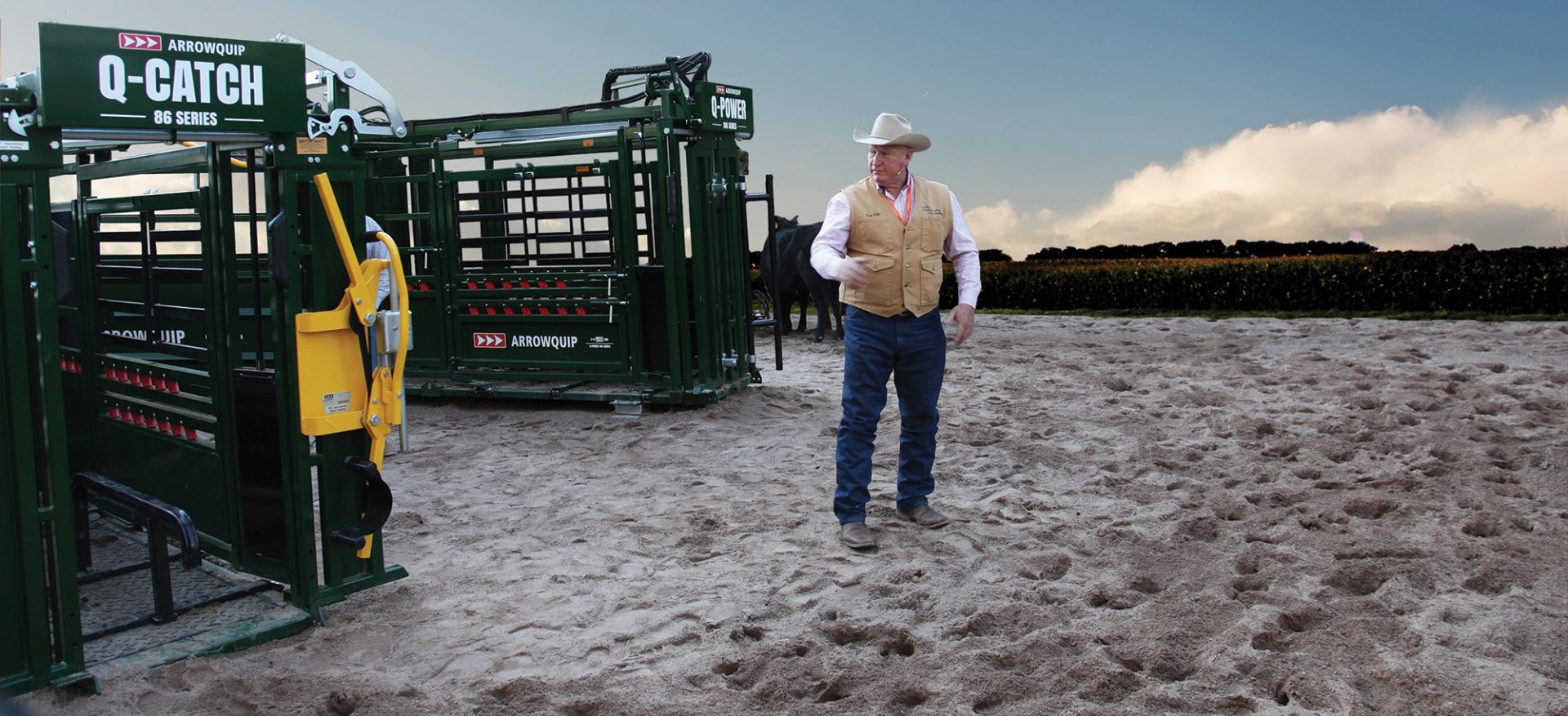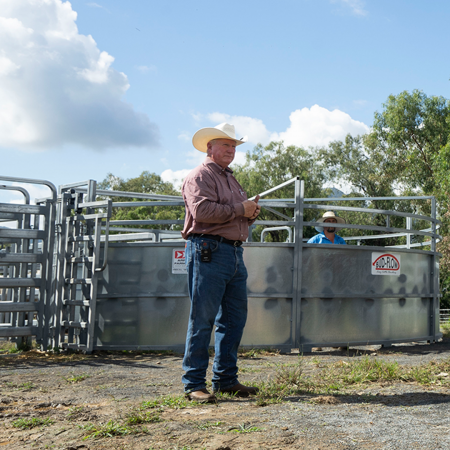Optimize Your Cattle Handling System Design - Ron Gill, PHD & Rick Machen, PHD

In working cattle in any processing facility it is important to keep the principles of cattle behavior in mind as your cattle handling system is being designed. Anytime we can create cattle flow where they can go past where we need them to end up it will make the cattle handling and processing easier. Also remember cattle do not like being moved toward a solid sided or closed in area, as they do not perceive a way out. If it is necessary or desirable to use closed sided processing areas, then the design must be large enough for cattle to go past where they need to come back to without putting too much pressure on the cattle.
Many current cattle handling systems designs have short changed that last requirement and simply try to rely on forcing cattle to enter the crowding area and using a forcing gate to push them around to the opening into the processing lead up.
There have been two basic designs that allow cattle flow to work correctly into the processing area. One is designed using a forcing pen commonly called a circular tub or simply "TubÀ design. There are literally dozens of variations of tub designs however few work as smoothly as the 135° or 270° sweep.
The other design is a "Bud BoxÀ. The Bud Box is the simplest to design but requires the better understanding of cattle behavior because there is no way to force an animal out of the Box and into the alley. If handlers of cattle are unwilling or unable to develop and adopt this understanding they should not build or try to use a Bud Box. They should stick to designs that will allow people who do not completely understand behavior to get cattle through the facility.
There is nothing magical or mystical about a Bud Box. It is a facility design that allows the handlers to position themselves correctly to facilitate cattle flow out of the box into either the alley leading to a chute or to a trailer load out. Dimensions are important to successful use of a Box but not as critical as handler position in relation to the stock leaving the Box. Without proper position and attention to detail a Box will only confuse the stock and frustrate the handler.
Recently, a variation of a Tub design has been introduced by Arrowquip to mimic the flow created by a Bud Box but utilize the design and function of a Sweep Tub. The BudFlow® Tub is designed so cattle are brought in to the tub backwards from the normal approach to loading cattle into a Tub. The cattle go to the back of the Sweep and then return to the point of entry, which is now closed, and the only exit is out the alley. If cattle do not flow out of the Tub the option of using the Sweep gate is still available to move the cattle towards the lead-up to the chute. The BudFlow® Tub mimics the Bud Box and the 135°or 270° Tub systems, that create this flow back movement in cattle.
Always keep in mind that any kind of Tub or Box is a flow-through part of the facility. Cattle should never be stored in a Tub or Box waiting to be sent into the alley or to a trailer. Bring them in and let them flow back out immediately.
The Tub or Box should be large enough to accommodate a volume of cattle adequate to fill the alley or fill a trailer compartment. An alley to a squeeze chute should hold a minimum of 4 cows and might need to hold 20 head depending on the speed of processing. Alleys on cow-calf operations will typically hold 5 to 6 cows. Facilities working calves or yearlings routinely need alleys for 12 to 20 head of cattle.
Remember, the alley will normally not be empty when additional cattle are brought through the Tub or Box. To maintain flow, it will be necessary to add additional cattle while one or two still await processing. Consequently, the length of the alley is important. Ideally it would be long enough to hold an adequate number of cattle for processing while more cattle are brought through the Tub or Box - without disrupting flow. A short lead-up may result in frequent interruptions of cattle flow and processing.
For some reason the industry has migrated toward the alley starting to curve at the entrance from the Tub or Box. The exit from a Tub or a Box and entrance into the alley should be straight for at least two mature cow body lengths. This allows flow to become established without the appearance of entering a dead-end alley. Keep it straight for at least 12 feet and then start a curve if warranted (ex. space is limited). Otherwise a long straight alley works very well for processing cattle.
Excerpt from Cattle Handling Pointers
Ron Gill, PhD & Rick Machen, PhD
Effective Stockmanship
Looking for more expert advice? Check out these blogs!
TOP 10 EXPERT CATTLE ALLEY DESIGN TIPS THE 5 ESSENTIALS OF LOW-STRESS CATTLE HANDLING
About the Author

Dr. Ron Gill
Dr. Ron Gill is Professor and Extension Livestock Specialist for Texas A&M AgriLife Extension. H...More Information on Dr. Ron Gill
Email Dr. Ron Gill: effectivestockmanship@gmail.com


Comments
Join the Discussion
Comments